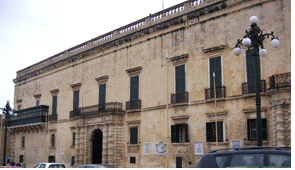...Best of Sicily presents... Best of Sicily Magazine. ... Dedicated to Sicilian art, culture, history, people, places and all things Sicilian. |
by Vincenzo Salerno | ||
Magazine Index Best of Sicily Arts & Culture Fashion Food & Wine History & Society About Us Travel Faqs Contact Map of Sicily |
Returning to the present, Malta is, of course, quite different from its bigger neighbor in many important respects. The first impact, if you're arriving from Sicily, is that Malta's cities and towns are much cleaner than Sicily's. The crime rate is very low, with no organised crime (Mafia). The Maltese speak their own language, naturally, but also English, the other national language; here in Sicily the lack of proficiency in English is one of the many factors that keeps our island backward. What is more, the Maltese you meet in Valletta and other cities seem just a bit more engaging and courteous than the Sicilians you encounter in Palermo, Catania and Messina. The shops, restaurants and businesses in Valletta and nearby St Julian's are strikingly cosmopolitan compared to what you encounter in Palermo, Catania and Taormina. Most importantly, things actually function: buses and other transportation (no airline strikes), and public services such as the university and post, private enterprises and historic sites. Yes, we Sicilians could learn a lot from our friendly neighbors --and distant cousins-- the Maltese. A republic today, Malta was under British control for the better part of two centuries, which is why English is spoken there. This also explains a certain sense of British efficiency (at least compared to what one is accustomed to here in Italy) as well as the lingering presence of English cuisine and British banks such as HSBC. Maltese is the only Semitic language written in Roman characters, and the only Arabic tongue recognised as an official national language of a European Uniion nation. The euro is the national currency. The typical Maltese may not be much more affluent than the average Sicilian, who blames "poverty" for the increasingly high rate of crime here in Sicily, but you would never know this from just walking around Vittoriosa, Rabat or other Maltese towns. There are no beggars --either locals or gypsies (Roma). Unlike Sicily, Malta is still overwhelmingly Roman Catholic in a serious (and refreshingly non-hypocritical) way. People actually go to church and generally adhere to traditional Catholic teaching; divorce and abortion are illegal and marital infidelity is statistically rare compared to what you see in Sicily. Things to See: The legacy of the Knights of Malta is ubiquitous. Not to be missed are the Grand Master's Palace with its armoury, one of the largest in Europe, and the Co-Cathedral of St John, which boasts two paintings by Caravaggio. The National Museum of Archaeology is a must-see. All these attractions are in Valletta, itself a charming place to visit. In Paola, outside Valletta, the Hal Saflieni Hypogeum, a vast subterranean complex built around 3,600 BC, is unique, and the Tarxien Temples are nearby. A visit to the Hagar Qim and Mnajdra temples, overlooking Malta's southern shore, makes for a delightful excursion. Hilltop Mdina, the island's capital until the knights arrived, has some medieval elements, including the Norman-Arab Palazzo Falson (whose Arab fountain is a copy of the one in Monreale's cloister). In Rabat, just outside Mdina, is the cave where St Paul stayed during his visit en route to Sicily and Rome, and also the catacombs associated with St Agatha, Catania's patron saint. In Summer, coastal St Julian's is the most popular entertainment and resort district. The Cuisine: Rabbit is a local speciality. Try it rustic style (stewed "fenek") or with garlic in white wine sauce; another popular recipe (similar to a Sicilian one) is with cinnamon and unsweetened chocolate. Pastizzi, rolls of bread pastry stuffed with peas or cottage cheese, seem to be sold everywhere. Gozitan cheese (a speciality, as its name implies, of the island of Gozo) is similar to Greek feta but slightly aged and denser. The seafood is excellent. There are several local liqueurs made from pomegranates, cactus pears and anise. Most drinking water is bottled; Malta produces very little spring water and the desalinated tap water is not recommended for drinking. There are many restaurants offering Italian or English cuisine. About the Author: Palermo native Vincenzo Salerno has written biographies of several famous Sicilians, including Frederick II and Giuseppe di Lampedusa. | |
Top of Page |
 It is the nearest
foreign nation to Sicilian shores. From the time of Roger "Guiscard"
Hauteville (father of
It is the nearest
foreign nation to Sicilian shores. From the time of Roger "Guiscard"
Hauteville (father of